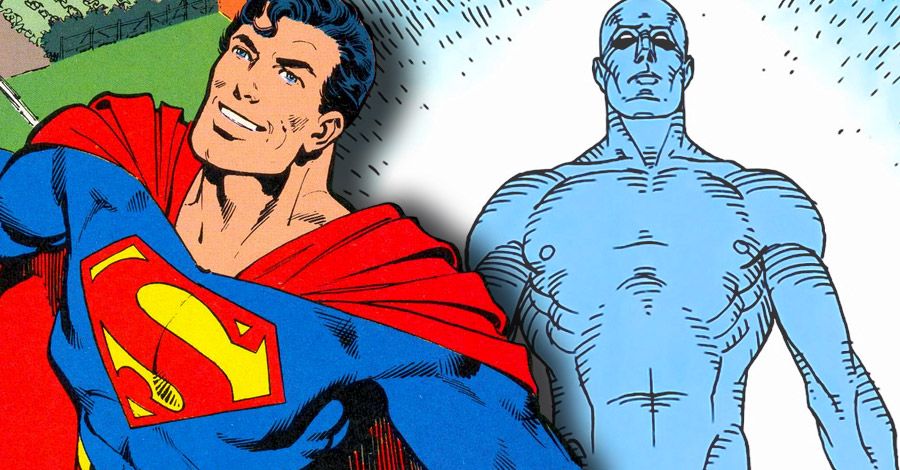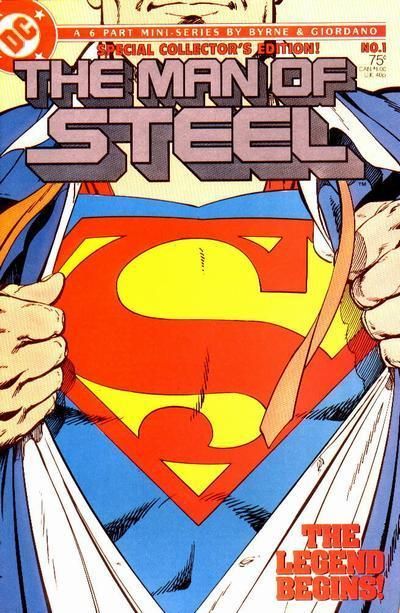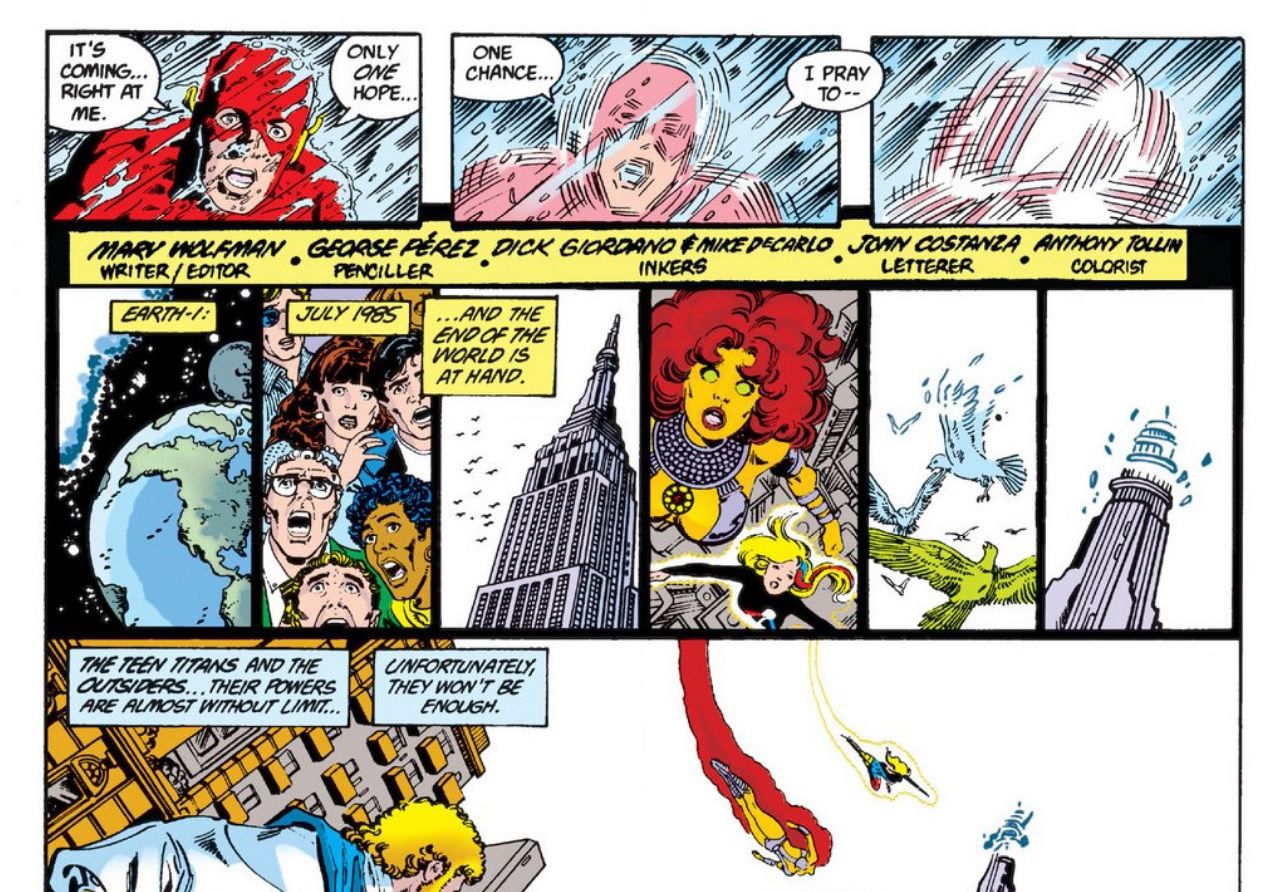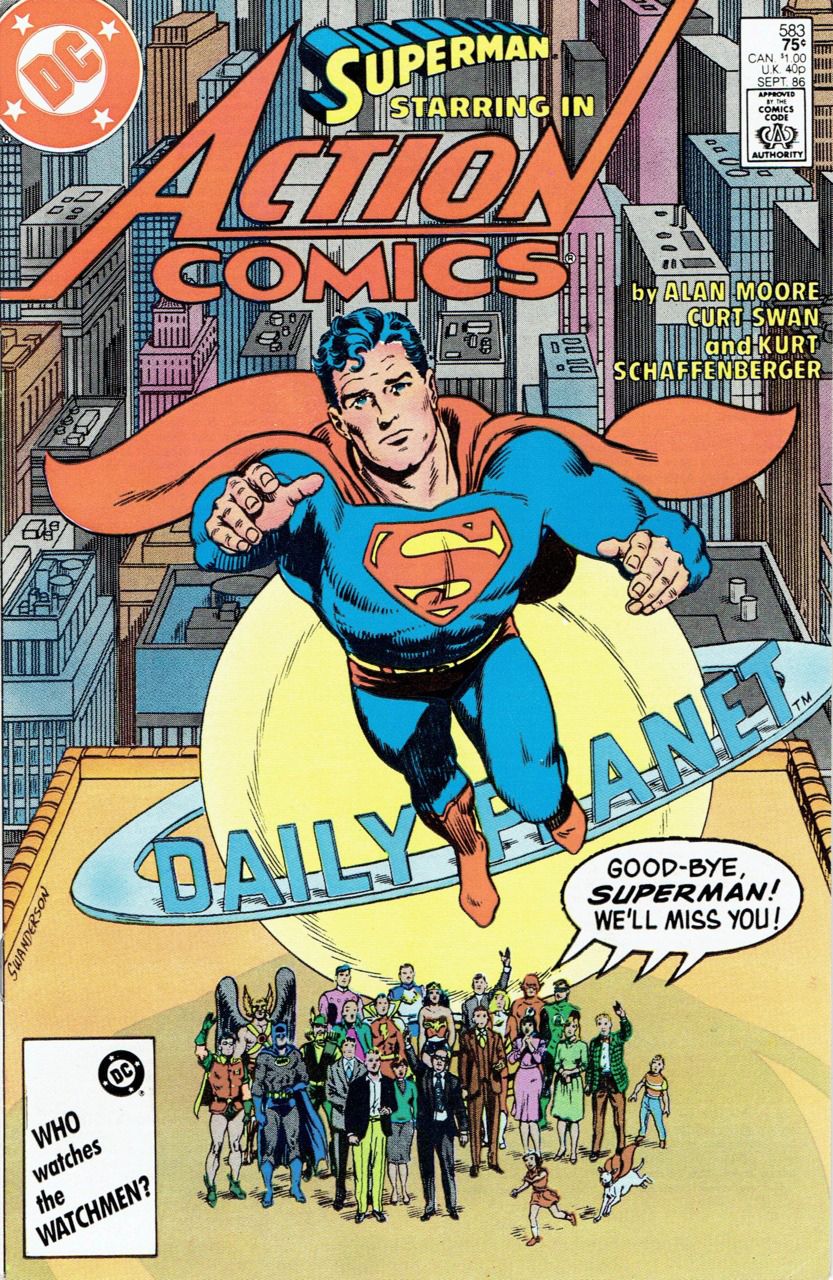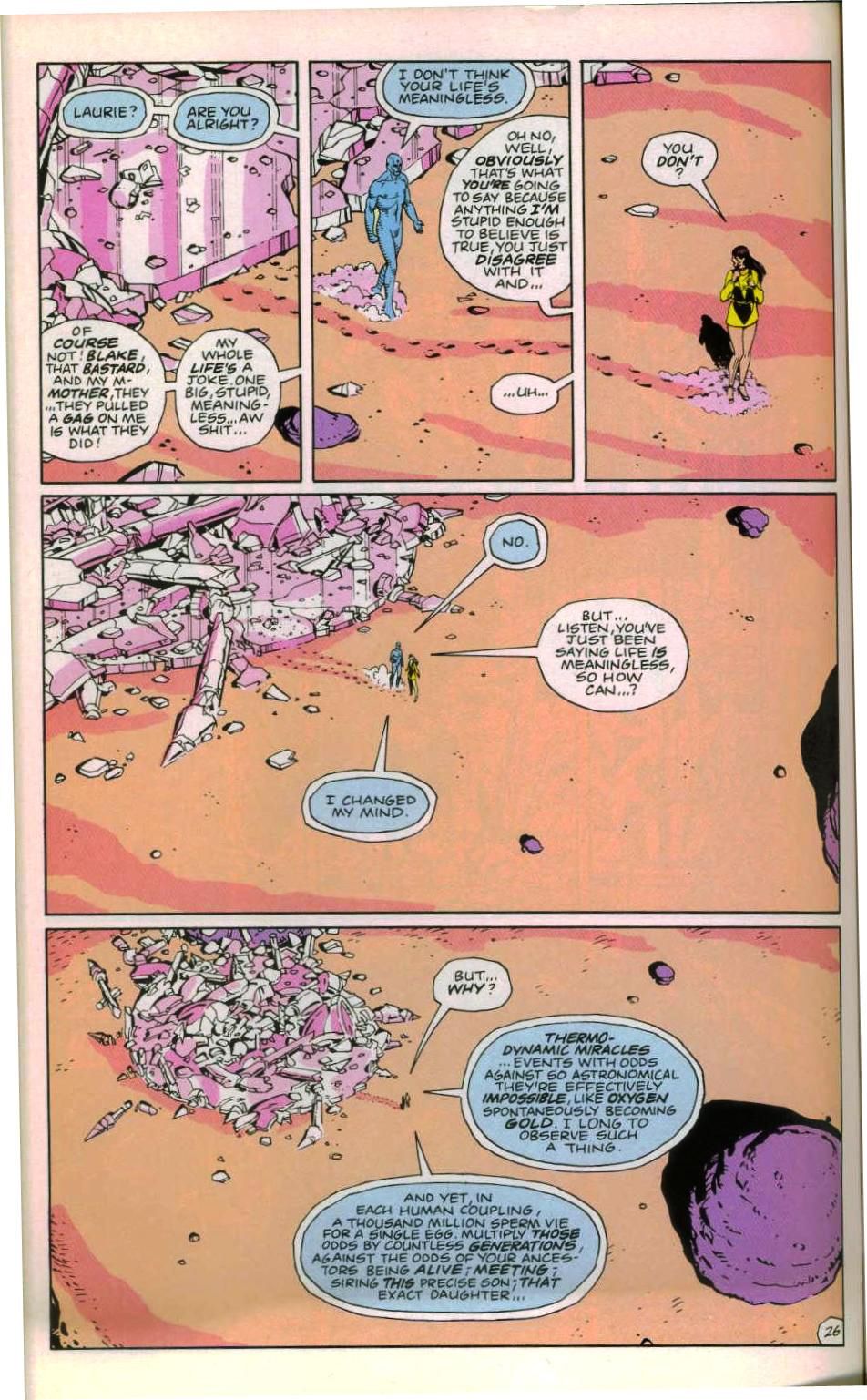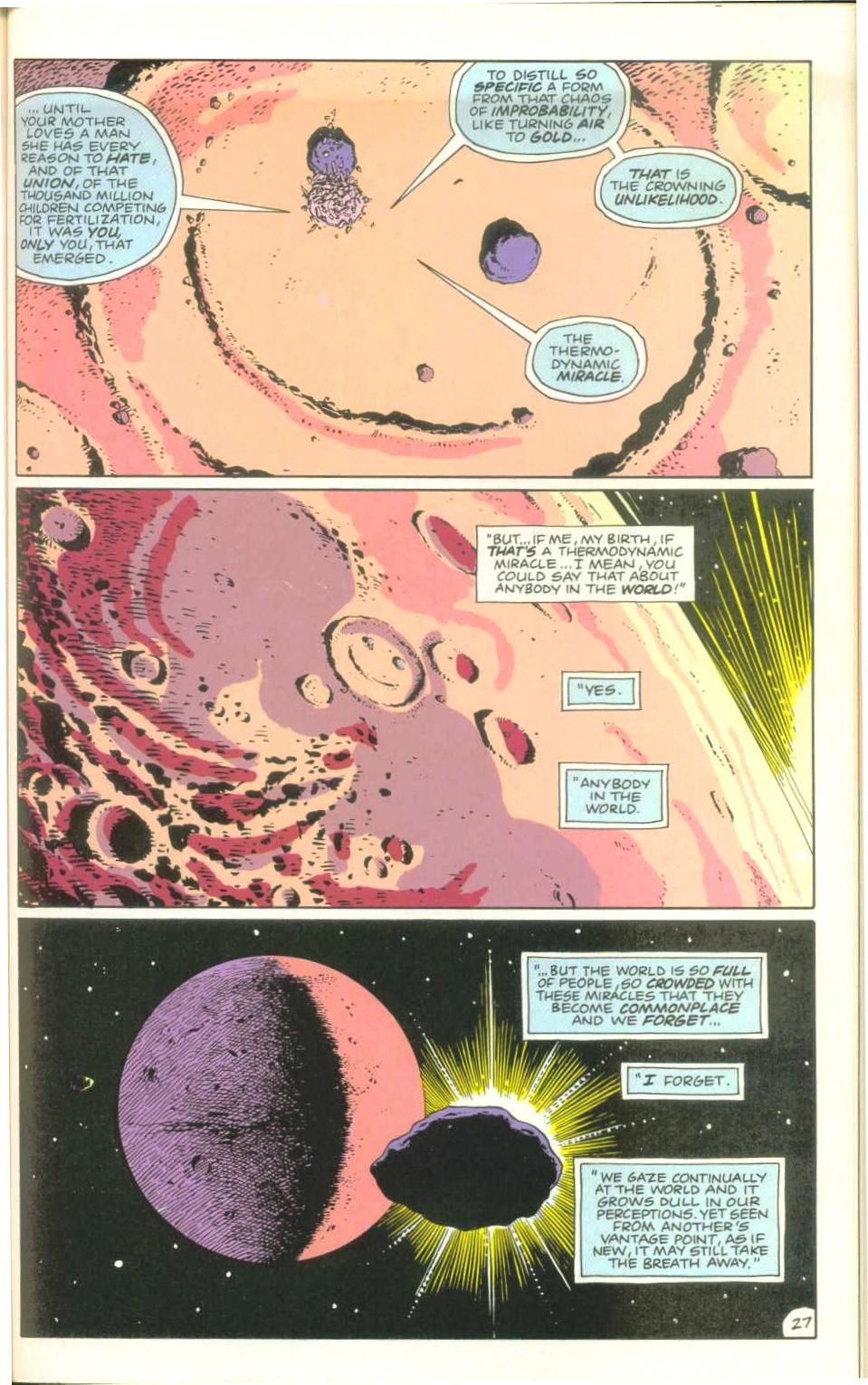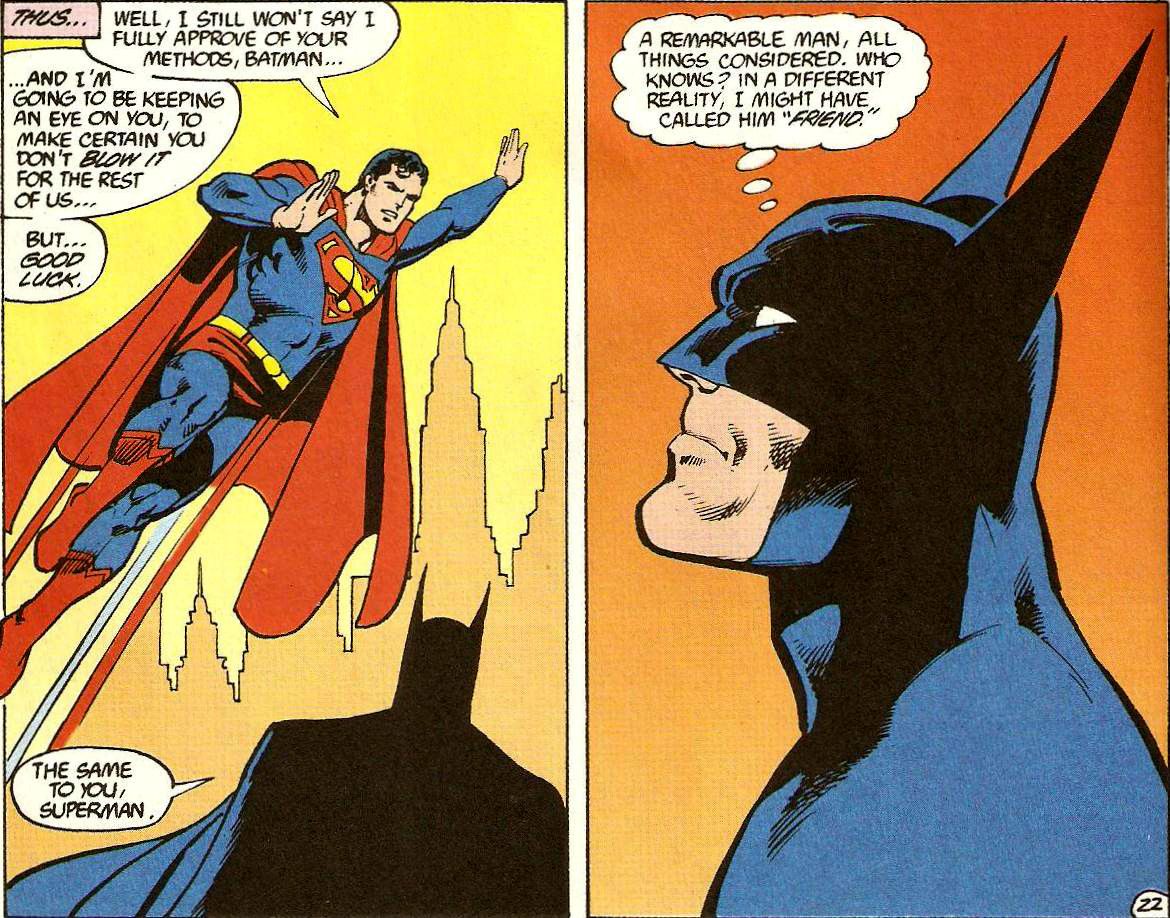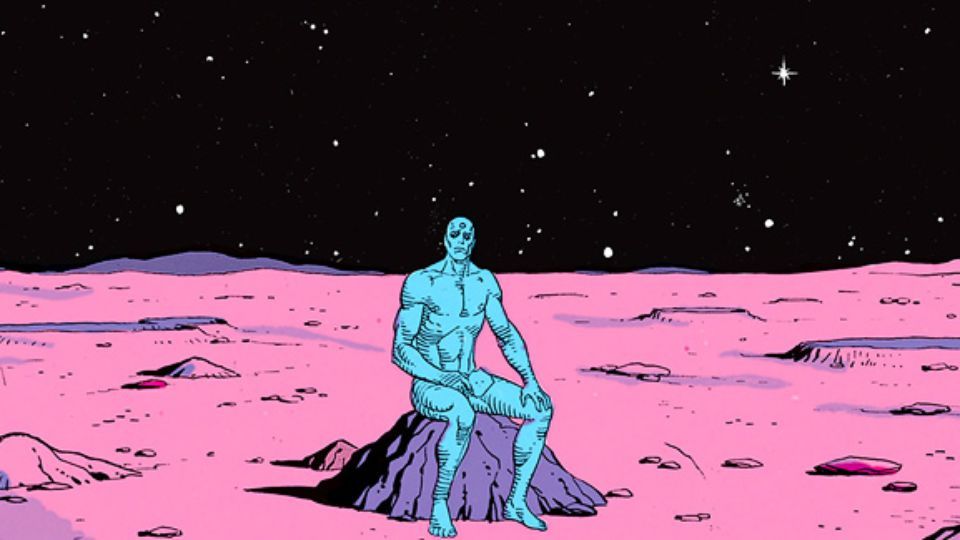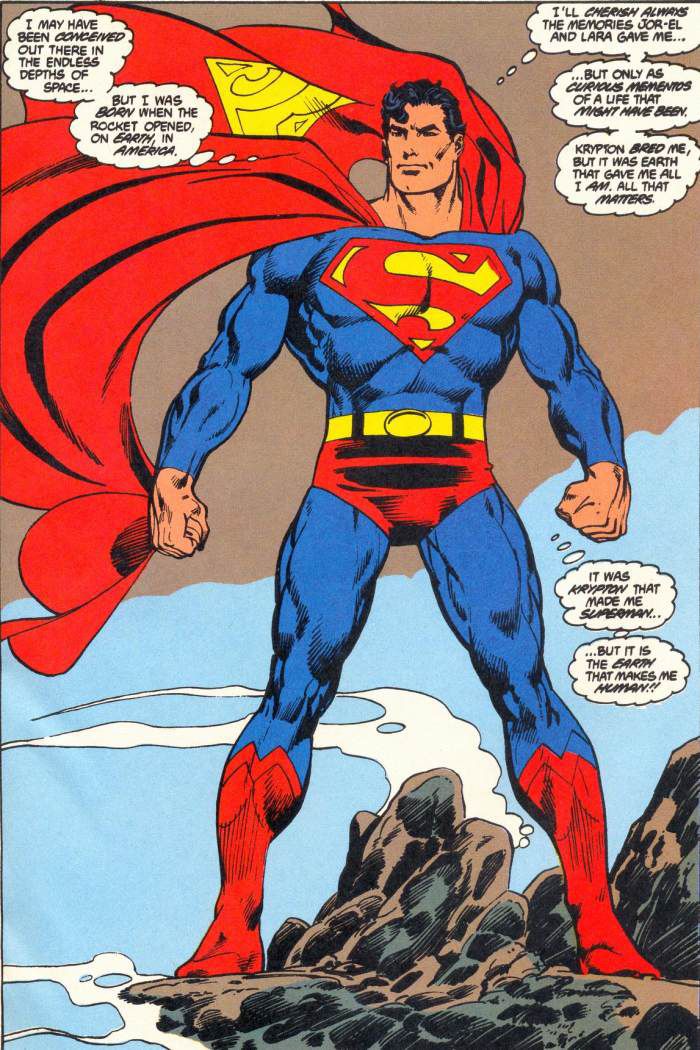DC Comics' "Rebirth" initiative combines the 30-year-old "Watchmen" and the second-most recent version of Superman, which also dates back to 1986. When I realized that, I figured it was simply another instance of the publisher favoring older fans, but the more I thought about it, the more I wondered if there weren't some deeper connection -- or, more accurately, the opportunity to make a deeper connection. The short answer is yes, sort of. The long answer lies below.
1986 was a big year for DC. A year earlier, the publisher celebrated its 50th anniversary with the universe-shattering "Crisis on Infinite Earths," but 1986 was when "Crisis" paid off, beginning with the spring's Superman revamp. Still, the year wasn't all about remaking the DC Universe. On May 13, the first issue of Alan Moore and Dave Gibbons' "Watchmen" arrived in comics shops. Telling the story of a world changed irrevocably by its lone super-being, the series was both an indictment of superhero comics and a powerful influence on them.
Even so, the market belonged to old favorites. John Jackson Miller notes that although "Watchmen" sold fairly well, three issues of "The Man of Steel" and the initial two issues of the new "Superman" were each No. 1 for the first five months they shared shelf space.
Thirty years later, it's not difficult to believe we're still talking about "Watchmen" and "The Man of Steel." What is difficult to believe is that DC is now trying to marry their characters. Because the two works have so little in common, my theory rests (rather shakily, I admit) on coincidences involving both fictional and real-world chronologies. (All dates refer to real-world direct market publication, with newsstands getting each issue a month later.)
We begin, not surprisingly, with the miniseries that facilitated "The Man of Steel's" changes. The 12 issues of "Crisis on Infinite Earths'" were released monthly from December 1984 through November 1985, with the bulk of the story's action occurring during July 1985; the whole thing was over by August. (Yes, "Crisis" involved time travel and events occurring "simultaneously" across time periods, but let's keep this simple.) Although "Crisis" ended with everyone sharing the same Earth, for about six real-world months nothing else really changed. Indeed, the two-part farewell to the Superman of the Silver and Bronze Ages was grounded firmly in that old continuity.
RELATED: DiDio & Lee Says DC Will Take the Time to Do "Watchmen"/Rebirth Story 'Right'
Naturally, for purposes of this piece, we care about "Whatever Happened to the Man of Tomorrow?" because Moore wrote it. It was serialized in "Superman" #423 and "Action Comics" #583, which, like "Watchmen" #1, were published in May 1986. In fact, "Watchmen" #1 came out a week before "Whatever Happened ..." began. Coincidental, yes, but still a noteworthy few weeks for Moore.
One of the first things that struck me about "Watchmen" was its start date of Oct. 12, 1985. Reading that first issue in May 1986, with "Crisis'" July 1985 still fresh in my fannish mind, the October date was quite significant. "Crisis" had put Blue Beetle, Captain Atom and other former Charlton characters on Earth-Four, and because "Watchmen's" characters were based on those heroes, I had wondered whether "Watchmen" might be some sort of Multiversal remnant.
To me the October setting was a firm no, because the old Multiverse had been remade in July and August. If that sounds like a thin rationalization, it still made a certain amount of sense. Moreover, in what was likely an unintentional parallel with the way "Crisis" closed out 1985, the main story of "Watchmen" ended on Nov. 2, 1985, with an epilogue on Dec. 25 (in the real world, "Watchmen" #12 shipped on June 23, 1987).
Here's the chronology so far:
- Fictional July 1985: the bulk of "Crisis on Infinite Earths"
- Fictional October-November 1985: the bulk of "Watchmen"
- Real-world November 1985: "Crisis" #12
- Real-world May 1986: "Watchmen" #1 and "Whatever Happened to the Man Of Tomorrow?"
To be sure, all that lining up of in-story and real-world dates is somewhere between convenient and tortured. "Watchmen" occurs in 1985 because it is an alternate history, not a potential future or a present-day parallel. Even if the 1985 time frame were a nod to "Crisis," it would be a small one. These weren't the familiar Charlton characters, or even their multiversal counterparts. Instead, they were explicitly post-Crisis, and thus explicitly outside the main DC cosmology.
Nevertheless, those who are so inclined could probably make that chronology work. Mashing together real and fictional dates would have Doctor Manhattan leaving the "Watchmen" universe on Nov. 2, 1985, just as the real-world DC Comics is putting out the final issue of "Crisis." Some six months later, the real-world DC will publish the first issue of "Watchmen" and the final issues of the pre-relaunch Superman, all written by Moore and all coming out in May 1986. It's a series of endings and new beginnings, culminating in the relaunch of Superman -- which soon ripples through the rest of the superhero line -- in June 1986. Anyone who wanted to see Doctor Manhattan's blue hand working behind the scenes could make him available then, because he would have been wandering around since the previous November.
Granted, this is a Patton Oswalt-level theory based on some very flimsy connections. Still, the parallels don't stop there.
Why, as my colleague Brian Cronin has asked, would Doctor Manhattan want to muck around with the DC Universe? (What does God need with a starship?) It's all about tempering the effects super-people may have had on society as a whole.
RELATED: Why Would Doctor Manhattan Alter the DC Universe?
Thanks to the exploits of "Watchmen's" masked adventurers, superhero comics (including the Superman books) died out fairly quickly in "Watchmen's" world. They were replaced by EC-esque pirate comics, full of grim morality tales for a decidedly more adult audience. With that as a relatively minor cultural divergence, it's no wonder Doctor Manhattan tells Ozymandias he's "leaving this galaxy for one less complicated." I'm not sure the post-Crisis DC Universe was less complicated than "Watchmen," but certainly it wasn't as morally complex.
Doctor Manhattan also mentions wanting to create some new human life. After all he's been through, he might find it refreshing to watch a world full of (relatively) uncomplicated super-people chasing each other around and trying their best to do the right thing. We don't know if young Jon Osterman (born 1929) read Superman comics, but he would have been the right age when "Action" #1 came out in 1938. Again, if one were so inclined, one might imagine Doctor Manhattan casting around for inspiration in the spring of 1986, noticing that for one version of Superman, the story was about to end -- and deciding to watch over the new one.
As it happens, one of the seminal Superman stories also has its hero creating a new universe filled with life. In "All Star Superman" #10, writer Grant Morrison and artist Frank Quitely bring readers the details of Superman's last days on Earth -- including his creation of "Earth-Q," the so-called "world without Superman." We discover, though, that Earth-Q eventually develops its own fictional "Supermen," created by Friedrich Nietzsche and, more importantly, Jerry Siegel and Joe Shuster. Moreover, Morrison charts Earth-Q's development in the tiniest fractions of the second between 11:59 p.m. and midnight, which naturally is eerily similar to a "Watchmen" motif. As "All Star Superman" #10 came out in 2008, some 20 years after "Watchmen," Morrison could well have been riffing on Doctor Manhattan. For that matter, Morrison and Quitely would do their own "Watchmen" parody several years later as part of the "Multiversity" miniseries.
RELATED: Man of Steel Rebirth: Your Guide to the New (Old) Superman
Still, it's worth noting that when Superman created his own universe, he did it expressly to exclude super-people like himself. Doctor Manhattan could reasonably do the same. Or, as an aspiring watchmaker, he could want to "fix" what his presence had broken. (He apparently does fix Wally West's watch in the "Rebirth" special's epilogue.) This wouldn't necessarily be a world without superheroes. It could even be a world teeming with them, so much so that they're an accepted part of society. Heck, why not have worlds within worlds, so that Earth-Q turns out to be "Watchmen's" world, and the Prime Superman of "All Star" is really Doctor Manhattan's supreme being? There would be worse ways for "Rebirth" to end.
Before getting too far off track, let's go back to 1986. John Byrne's "The Man of Steel" miniseries spanned six biweekly issues in June, July and August. Each issue pretty much told a single story based around at least one key relationship. As such, it wasn't exactly a single narrative, but a set of episodes highlighting the changes from the previous continuity. For example, in Issue 1 Clark explains that he considers his private life a "fortress of solitude," and thereby implicitly rules out any remote Arctic hideaways. Issue 3 ends with Batman musing that "in a different reality, I might have called [Superman] 'friend'" (quoting the "Star Trek" episode "Balance of Terror," which makes me wonder about the implications of Bat-Trekkie). Issue 4 brings us the all-new, all-different Lex Luthor, Issue 5 updates Bizarro's origin, and Issue 6 lays out the new Clark/Superman dynamic. Obviously it works on its own, but it seems intended specifically to win over readers used to decades of Silver and Bronze Age minutiae. Put more simply, the changes are the point of the story.
Not that changing Superman was especially easy, but "Watchmen" aimed considerably higher, at the superhero genre itself. For Young Tom, "Watchmen" made a fairly convincing argument that this is how "real" superheroes would behave. Superpowers would be rare, if not unique; people who dressed in costumes and masks would have a whole battery of neuroses; and society itself would become even more fragile. Specifically, Nite Owl was basically a nerdy do-gooder in an Adam West-style costume; the Comedian parodied the Punisher and other antiheroes; Rorschach reflected Batman's worst tendencies; Ozymandias was lawful neutral; and Silk Spectre was probably the most well-adjusted of the bunch. They were largely ineffectual at best and global threats at worst, and before long they were either outlaws or lackeys. While "Man of Steel" laid out the new Superman rules, "Watchmen" arguably superseded it with new perspectives on superheroes themselves.
Still, to read "Watchmen" for its cape-and-cowl critique is to miss much of its larger message. While its world was changed dramatically by the presence of one super-powered being, its story depends on the collective actions of any number of individuals, from Rorschach and Laurie to Seymour and the monster-creating artist. No one is irrelevant, because each is the "thermodynamic miracle" Doctor Manhattan famously describes. "Watchmen" isn't a grim tale about the downward spiral of a doomed world, it's the hopeful story of how that world bought itself at least a little redemption -- and managed to find room for a new-ish pair of costumed adventurers. While its ending is open to interpretation, its pieces all work together to illustrate that interdependency. Isolate one piece, for example by putting Doctor Manhattan in a new (and potentially ill-fitting) setting, and you risk the balance that the whole work achieved.
In comparison, "The Man of Steel" is merely the first six issues of what would become a 25-year Super-renovation. It ends by explaining one of Byrne and company's biggest changes: Clark Kent is the real person, and no longer an act Superman puts on to fit in. It also contrasts with "Watchmen," assuming you're looking for that sort of thing. "The Man of Steel" emphasizes that neither superpowers nor the knowledge of his extraterrestrial heritage will change Clark from the person his parents raised. If anything, they'll give those altruistic impulses an inexhaustible outlet. "Watchmen" demonstrates the opposite, by showing that Jon Osterman's humanity can be eclipsed by Doctor Manhattan's unique perspective. Again, the two characters have vastly different origins and serve wildly divergent purposes, but the distinctions are still somewhat illuminating.
Put it all together and you have the story of an omnipotent superhuman who's pushed his world as far as it will go and leaves it all behind ... until, thanks to editorial fiat, he decides to play with the timeline of a more commercially oriented shared universe. It's not entirely coincidental that "Rebirth" draws on the aftereffects of two 30-year-old miniseries, because the initiative seeks largely to capitalize upon past glories. And 1986 was one of DC's best years ever.
Indeed, it's supremely ironic that "Rebirth" would incorporate, and even try to integrate, the worlds of these two works. At the time they represented new, innovative and even practical ways of approaching their subjects. Today they're celebrated as milestones of modern superhero comics, not least because they're so familiar. If you were going to revitalize a whole line of superhero books, you could do worse than to analyze "Watchmen" and "The Man of Steel."
Nevertheless, to exploit them so directly, never mind to try and harmonize them, seems somewhat backward-looking. If you're a middle-aged coot like me, you followed each issue of these miniseries 30 years ago, and now you're eager for something which at least aspires to be as fresh and novel.
It's a big thing, to say the least, for "Watchmen" to be folded into DC's main superhero line. It crosses a line that many would say should never have been approached. This little exercise has helped me accept that it's happening, but personally I'm not any more excited about it. How do you "get right" something that shouldn't have been done at all? Is this the superhero-relaunch equivalent of Ozymandias' triumph-from-tragedy plan? ("I did it 30 years ago.")
Ultimately, it's not enough simply to have Superman meet Doctor Manhattan. Whatever comes out of that meeting must be worthy of the occasion. I hope sincerely that 'Rebirth" is worth it.

